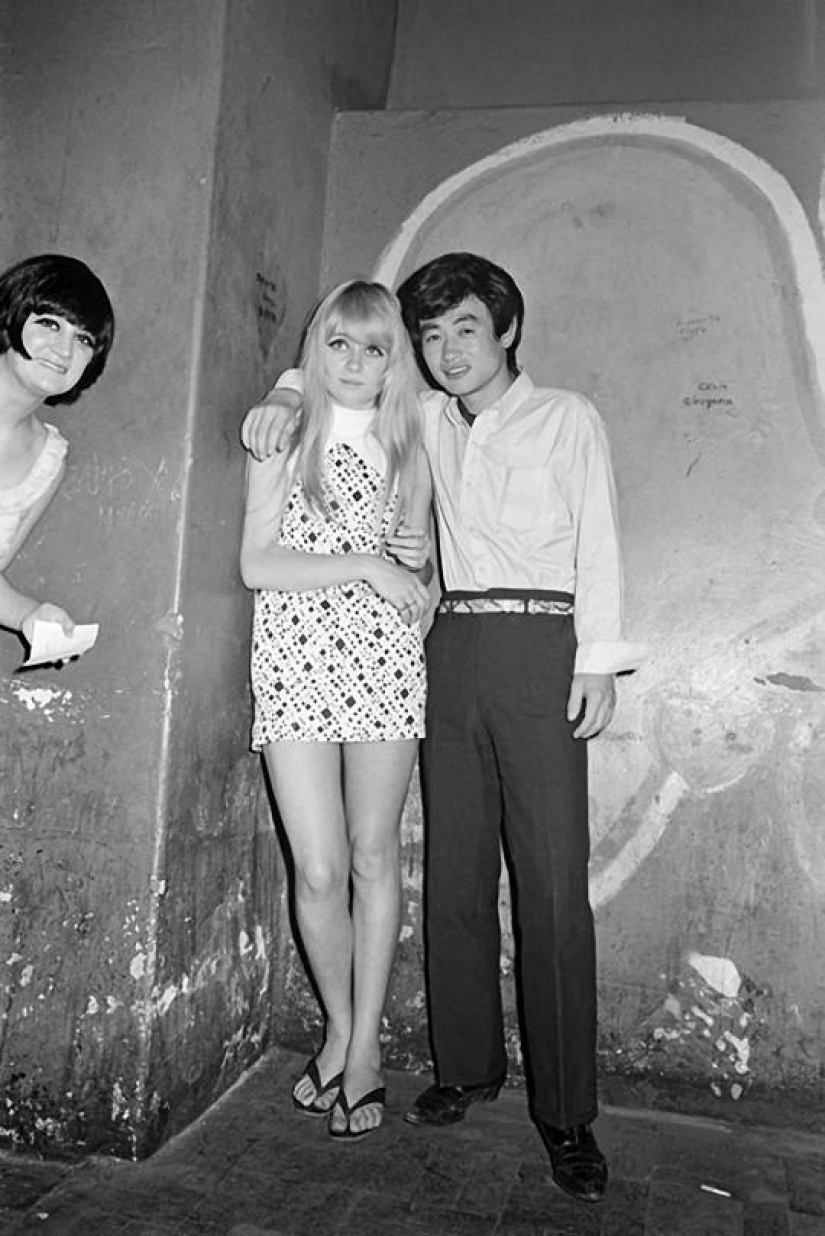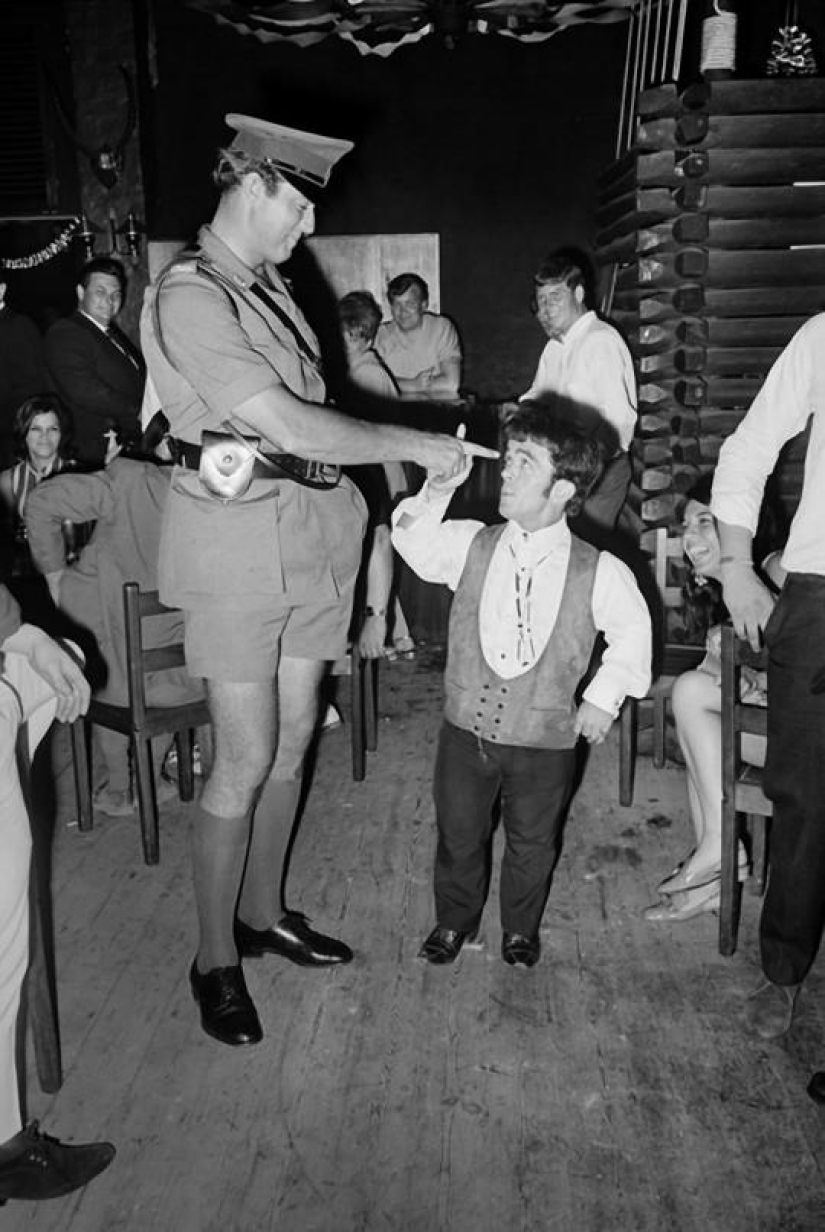How People Partyed in Africa in the Late 1960s
The end of the 60s, the sexual revolution, distant South Africa, the apartheid regime – it would seem that they have absolutely nothing in common. But take a closer look… does it remind you of anything?

These photographs were taken in nightclubs in Cape Town, South Africa, in the late 60s.
 True, the photographer himself was never able to attend his first exhibition. Two weeks after its opening, Monk was shot dead in a ridiculous domestic quarrel.
True, the photographer himself was never able to attend his first exhibition. Two weeks after its opening, Monk was shot dead in a ridiculous domestic quarrel.
 Once, while still working at the Catacombs, Billy said to one of his friends: "You'll see, I'll be good at photography. They'll talk about my pictures long after I'm gone." He was absolutely right.
Once, while still working at the Catacombs, Billy said to one of his friends: "You'll see, I'll be good at photography. They'll talk about my pictures long after I'm gone." He was absolutely right.
 The main location of the action is the Catacombs Club, a pet grooming salon by day and one of the most popular and crowded night spots in the city by night.
The main location of the action is the Catacombs Club, a pet grooming salon by day and one of the most popular and crowded night spots in the city by night.
 The Catacombs Club, February 23, 1968.
The Catacombs Club, February 23, 1968.
 The club's visitors - the so-called "crowd" of the time - were a wild mix of bohemians and underground.
The club's visitors - the so-called "crowd" of the time - were a wild mix of bohemians and underground.
 Rich old men with young wives, socialite girls and homosexuals lived here side by side with bandits, sailors and prostitutes, as well as, with an audacity unprecedented during the apartheid era, interracial couples.
Rich old men with young wives, socialite girls and homosexuals lived here side by side with bandits, sailors and prostitutes, as well as, with an audacity unprecedented during the apartheid era, interracial couples.
 The Catacombs Club, January 8, 1968.
The Catacombs Club, January 8, 1968.
 The fashion of the 60s - miniskirts, boots, bright makeup and voluminous bouffants - clearly demonstrates the results of the sexual revolution that swept through Western countries.
The fashion of the 60s - miniskirts, boots, bright makeup and voluminous bouffants - clearly demonstrates the results of the sexual revolution that swept through Western countries.
 Club "Catacombs", 1968.
Club "Catacombs", 1968.
 The interior of the clubs is, to put it mildly, unpretentious and not much different from the nearby slums. Bare walls, a couple of tables and a plastic bar counter.
The interior of the clubs is, to put it mildly, unpretentious and not much different from the nearby slums. Bare walls, a couple of tables and a plastic bar counter.
 The visitors' favorite drink is brandy and cola.
The visitors' favorite drink is brandy and cola.
 The Spurs Club, December 29, 1967.
The Spurs Club, December 29, 1967.
 The photographer, Billy Monk, is a prominent and well-known figure in Cape Town's nightlife.
The photographer, Billy Monk, is a prominent and well-known figure in Cape Town's nightlife.
 With a reputation as a ladies' man, womanizer, fighter and musician, he was also an integral part of the crowd he photographed.
With a reputation as a ladies' man, womanizer, fighter and musician, he was also an integral part of the crowd he photographed.
 It was precisely the fact that he was accepted as one of their own that allowed him to approach his subjects so closely and get candid shots of nighttime fun. True, this was also facilitated by the reputation of a man who could hit at any moment, and not weakly.
It was precisely the fact that he was accepted as one of their own that allowed him to approach his subjects so closely and get candid shots of nighttime fun. True, this was also facilitated by the reputation of a man who could hit at any moment, and not weakly.
 The Catacombs Club, February 13, 1968.
The Catacombs Club, February 13, 1968.
 He didn't like to talk about his childhood, which was clearly not spent in the most prosperous family. His early activities consisted of somehow surviving, mainly through petty crime.
He didn't like to talk about his childhood, which was clearly not spent in the most prosperous family. His early activities consisted of somehow surviving, mainly through petty crime.
 Before diving headfirst into the nightlife, he served time in prison for safe-breaking, worked as a model and was a diamond diver.
Before diving headfirst into the nightlife, he served time in prison for safe-breaking, worked as a model and was a diamond diver.
 Near the Catacombs club, February 26, 1969.
Near the Catacombs club, February 26, 1969.
 Monk came to work at the Catacombs as a bouncer, but he was not very good at this role, beating guilty customers half to death.
Monk came to work at the Catacombs as a bouncer, but he was not very good at this role, beating guilty customers half to death.
 When a job as a bouncer at a club didn't work out, Monk almost accidentally entered the world of photography. While still working at the Catacombs, he began making money photographing the diverse crowd of the controversial establishment.
When a job as a bouncer at a club didn't work out, Monk almost accidentally entered the world of photography. While still working at the Catacombs, he began making money photographing the diverse crowd of the controversial establishment.
 The Spurs Club, February 27, 1967.
The Spurs Club, February 27, 1967.
 Over the course of two years, from 1967 to 1969, its bright flash illuminated not only the dirty underbelly of underground clubs, but also the diverse, cheerful crowd that frequented them.
Over the course of two years, from 1967 to 1969, its bright flash illuminated not only the dirty underbelly of underground clubs, but also the diverse, cheerful crowd that frequented them.
 The nightlife Monk showed was hidden from view at the time and is hard to see anywhere else even now. In fact, he was the only one who captured this dark side of life, which is what later brought his photographs such success.
The nightlife Monk showed was hidden from view at the time and is hard to see anywhere else even now. In fact, he was the only one who captured this dark side of life, which is what later brought his photographs such success.
 The Catacombs Club, October 27, 1967.
The Catacombs Club, October 27, 1967.
 Monk worked during the height of apartheid in South Africa, a time when skin colour determined where a person could live, work, marry and drink.
Monk worked during the height of apartheid in South Africa, a time when skin colour determined where a person could live, work, marry and drink.
 The underground lifestyle of the Catacombs and its visitors gave birth to so-called dissent - all possible taboos and conventions of apartheid were violated in the club.
The underground lifestyle of the Catacombs and its visitors gave birth to so-called dissent - all possible taboos and conventions of apartheid were violated in the club.
 However, neither the photographer nor the subjects of his photographs considered themselves to be oppositionists or fighters against the regime. Monk was only trying to make money by selling the photographs to the people depicted in them as memories of a “wonderful evening,” and they simply wanted to have a good time.
However, neither the photographer nor the subjects of his photographs considered themselves to be oppositionists or fighters against the regime. Monk was only trying to make money by selling the photographs to the people depicted in them as memories of a “wonderful evening,” and they simply wanted to have a good time.
 The Catacombs Club, March 18, 1968.
The Catacombs Club, March 18, 1968.
 Monk's photographs, annotated with detailed names and dates, were discovered in 1979, 10 years after he stopped taking photographs, and were exhibited in Johannesburg in 1982 to great acclaim.
Monk's photographs, annotated with detailed names and dates, were discovered in 1979, 10 years after he stopped taking photographs, and were exhibited in Johannesburg in 1982 to great acclaim.
 The Balalaika Club, December 1969.
The Balalaika Club, December 1969.
 Once, while still working at the Catacombs, Billy said to one of his friends: "You'll see, I'll be good at photography. They'll talk about my pictures long after I'm gone." He was absolutely right.
Once, while still working at the Catacombs, Billy said to one of his friends: "You'll see, I'll be good at photography. They'll talk about my pictures long after I'm gone." He was absolutely right.
Recent articles

Most of us think that the color of the eggshell does not play any role and it is possible not to pay attention. But it's not and ...

The more we rely on technology, the more potential power hackers gain over us. It doesn't matter if their goal is to help or cause ...

Creating a good portrait is one of the most difficult tasks for any photographer. In order to make a really natural and memorable ...